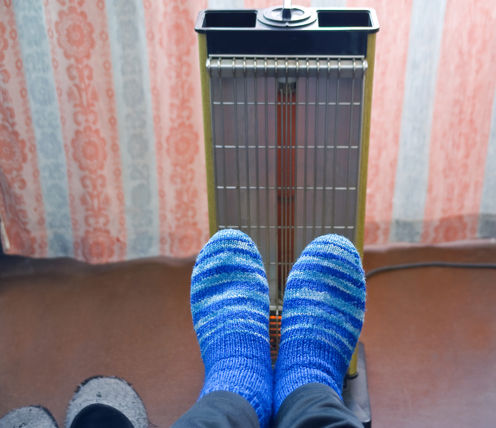Cold weather is a bigger killer than extreme heat – here’s why
For every death there’ll be many more hospital admissions for things such as strokes and heart attacks. Vladimirs Koskins/ShutterstockMost people are acutely aware of the toll the heat can take on human life, particularly since the extreme heat of Black Saturday in 2009 and the European heatwave of 2003. So it may come as a surprise that more Australians die from the cold than the heat. A new study published in The Lancet shows 6.5{c754d8f4a6af077a182a96e5a5e47e38ce50ff83c235579d09299c097124e52d} of deaths in this country are attributed to cold weather, compared with 0.5{c754d8f4a6af077a182a96e5a5e47e38ce50ff83c235579d09299c097124e52d} from hot weather. Most deaths will be from cardiovascular and respiratory disease, as it’s the heart and lungs that struggle when we are outside our comfort zone. When cold weather deaths were first noticed the theory was that it was


Most people are acutely aware of the toll the heat can take on human life, particularly since the extreme heat of Black Saturday in 2009 and the European heatwave of 2003. So it may come as a surprise that more Australians die from the cold than the heat.
A new study published in The Lancet shows 6.5{c754d8f4a6af077a182a96e5a5e47e38ce50ff83c235579d09299c097124e52d} of deaths in this country are attributed to cold weather, compared with 0.5{c754d8f4a6af077a182a96e5a5e47e38ce50ff83c235579d09299c097124e52d} from hot weather. Most deaths will be from cardiovascular and respiratory disease, as it’s the heart and lungs that struggle when we are outside our comfort zone.
When cold weather deaths were first noticed the theory was that it was due to people shovelling snow. Then when deaths were shown in warm countries such as Australia, the finger of blame moved onto the flu. While the winter flu does kill a lot of people, the majority of winter deaths are due to cold exposure via an increase in blood pressure.
The increase in blood pressure due to cold is relatively small for individuals, but almost everybody is exposed to the temperature and hence it becomes a large public health issue.
This is actually not a new finding. A seminal study also in the Lancet in 1997 demonstrated that cold was a major killer across Europe, and other studies have used historical records to show that cold has been a serious problem for centuries.
The new study is the first to show the size of the problem. It examined 13 countries, including the United Kingdom and Australia, and estimated that 7.3{c754d8f4a6af077a182a96e5a5e47e38ce50ff83c235579d09299c097124e52d} of deaths from 1985 to 2012 were due to cold, with just 0.4{c754d8f4a6af077a182a96e5a5e47e38ce50ff83c235579d09299c097124e52d} due to heat.
Of course, cold is often just the final trigger, and some deaths would have been in people with pre-existing illnesses such as heart failure or chronic obstructive pulmonary disease (COPD) who may not have had long to live. But these are deaths that are easily avoidable and many people would have had years to live.
Also, the study only examined deaths, but for every death there’ll be many more hospital admissions for things such as strokes and heart attacks.
Avoidable deaths
A big clue that these deaths are avoidable comes from comparing the size of the problem between countries. In Sweden, cold caused an estimated 3.9{c754d8f4a6af077a182a96e5a5e47e38ce50ff83c235579d09299c097124e52d} of deaths, whereas in Australia it caused 6.5{c754d8f4a6af077a182a96e5a5e47e38ce50ff83c235579d09299c097124e52d} (that’s one in 15 deaths).
How can it be that the often-freezing Sweden has fewer cold-related deaths than the mostly balmy Australia?

Magdalena Paluchowska/Shutterstock
The answer is that the Swedes are far more prepared for cold temperatures. They have better clothes and keep their homes warm.
Temperatures inside a flimsy wooden Queenslander in winter are often below 18°C whereas Swedish homes will be a comfortable 23°C whatever the weather. Many Australian homes are just glorified tents and we exposure ourselves to far colder temperatures than the Scandinavians do.
People with less money are more vulnerable as they may not be able to afford to heat their home or may live somewhere that’s harder to keep warm because it’s not well insulated. Caravans or mobile homes are particularly risky.
Keeping warm keeps our blood pressure down and also lowers other important cardiovascular risk factors. This includes blood viscosity (the thickness and stickiness of the blood, which affects its ability to flow through the vessels), cholesterol (which can build up and block the walls of the arteries) and fibrinogen (a protein produced by the liver that helps the blood clot).
We have solid evidence from high quality trials that insulating and heating homes lowers blood pressure, improves self-rated health and leads to fewer days off school and work.

Richard Majlinder/Shutterstock
As we approach winter in Australia we could save many lives by getting the simple message out there to keep warm. If we could be more like the Swedes and lower our cold deaths from 6.5{c754d8f4a6af077a182a96e5a5e47e38ce50ff83c235579d09299c097124e52d} to 3.9{c754d8f4a6af077a182a96e5a5e47e38ce50ff83c235579d09299c097124e52d} then we’d avoid around 1,200 deaths per year.
As there’s not been a single research dollar spent on investigating this problem there is a huge potential to save lives using some relatively simple initiatives, such as our group’s idea to give thermal clothing to people living with heart failure.
Climate change
I expect some climate change deniers will leap on this result and suggest we shouldn’t worry about extreme heat since the cold is a bigger killer. But this argument doesn’t hold.
On the other hand, it seems very likely that a warmer world will reduce the number of deaths due to cold. I’ve sensed some resistance to this prediction among some researchers, perhaps because they are reluctant to admit any potential benefit of climate change because of the ammunition it gives to the deniers.
Of course, the reduction in winter deaths could be wiped out by an increase in heat-related deaths. In every country studied in the Lancet paper, there was an increased risk of death during hot weather. Plus we should also consider the predicted increases in vector, food and water borne diseases, and the potentially catastrophic increase in global conflicts.
Premature deaths from both the heat and the cold are big problems that deserve our attention.
![]()
Adrian Barnett does not work for, consult to, own shares in or receive funding from any company or organisation that would benefit from this article, and has no relevant affiliations.
SOURCE: Health + Medicine – Articles – The Conversation – Read entire story here.








